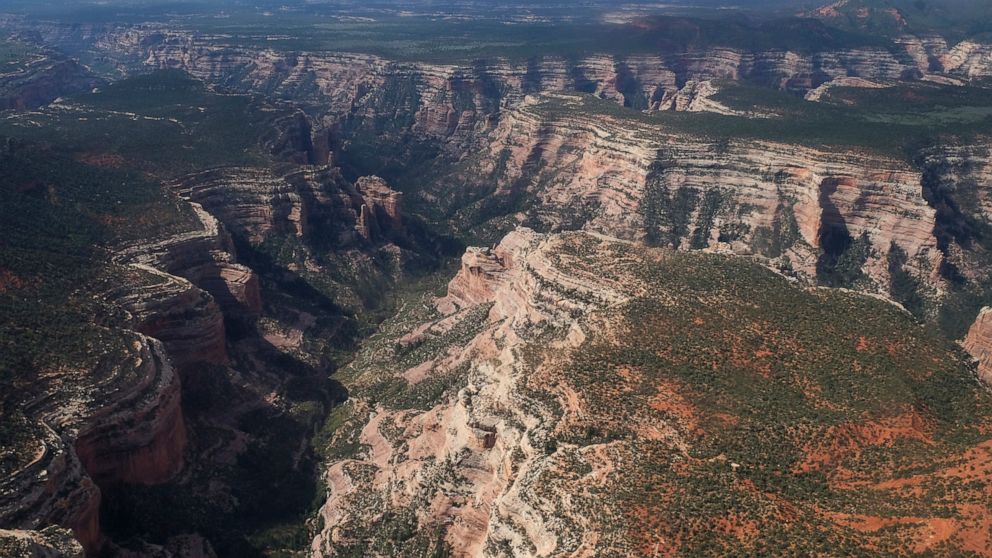
The U.S. government has decided to allow off-road vehicles access to archaeologically sensitive land at a Utah national monument that houses sacred tribal sites under a plan announced Friday.
The Bureau of Land Management’s plan for the Bears Ears National Monument says that certain historic sites most at risk will be off limits, but the agency chose an alternative that closes about 42 square miles (108 sq. kilometers) to off-road vehicles. That’s far less than a different option that would have closed nearly 184 square miles (476 sq. kilometers).
The plan was met by immediate criticism from environmental and tribal organizations, who say it will leave sensitive lands and sites vulnerable to damage.
“It’s like seeing that your grandmother’s house has been robbed,” said Carleton Bowekaty co-chair of the Bears Ears Inter-Tribal Coalition, in a statement. “These lands are sacred to us and they are being destroyed — sometimes inadvertently — by people who don’t understand our culture and way of life.”
The groups also consider the year-plus spent developing the plan a waste of time because lawsuits challenging the downsizing are pending. The final plan comes after the agency took into account public comment following the release of a proposal last summer that laid out the different alternatives.
Bureau of Land Management Utah state director Ed Roberson said in a news release that the plan protects cultural resources while allowing for recreation, keeping most of the monument open for hunting, fishing and target shooting. Roberson noted that no shooting will be allowed near cliff dwellings, petroglyphs and campgrounds.
“These plans will provide a blueprint to protect the awe-inspiring natural and cultural resources that make this monument nationally significant, while enhancing recreational opportunities and ensuring access to traditional uses,” Roberson said in the release.
President Barack Obama created Bears Ears National Monument in 2016 after years of lobbying by Native American groups who asked for more protections on what they consider sacred lands that are home to ancient cliff dwellings and other artifacts.
A year later, President Donald Trump downsized it by about 85% to 315 square miles (816 sq. kilometers) following a review of 27 national monuments by then-Interior Secretary Ryan Zinke. Trump earned cheers from Republican leaders in Utah.
Gov. Gary Herbert, who supported the downsizing, declined to weigh in on the plan Friday. He said in a statement that his office would be carefully reviewing the plan to ensure it protects artifacts and allows public access.
Trump also downsized Grand Staircase-Escalante National Monument in Utah by nearly half. The final management plan for the revised monument is still pending.
Trump said scaling back the two monuments reversed federal overreach. Past presidents have trimmed national monuments 18 times, but there’s never been a court ruling on whether the Antiquities Act also lets them reduce one.
Sen. Tom Udall of New Mexico and Rep. Raul Grijalva of Arizona were among Democrats who blasted the plan as being a waste of time since the lawsuits are pending and called it an example of the Trump administration’s “attack on public lands.” Udall was one 11 senators who urged the government to postpone the management plan until the courts resolved the lawsuits.
The Bears Ears plan’s allowance for using vehicle-dragged chains to clear woodland areas for fire prevention and right of way roads in parts of a popular rock climbing area known as Indian Creek are examples that the plan is ill-conceived, said Heidi McIntosh, managing attorney of Earthjustice’s Rocky Mountains office. The plan doesn’t do much to curtail off-roading either. The organization is among the coalition that sued over Trump’s reduction of the monument.
“This part of southern Utah is really been hammered by off-road vehicle use,” McIntosh said. “It not only damages the land itself, but is also the access point for people who drive around the back country looking for archaeological sites to loot.”





